Premium Only Content
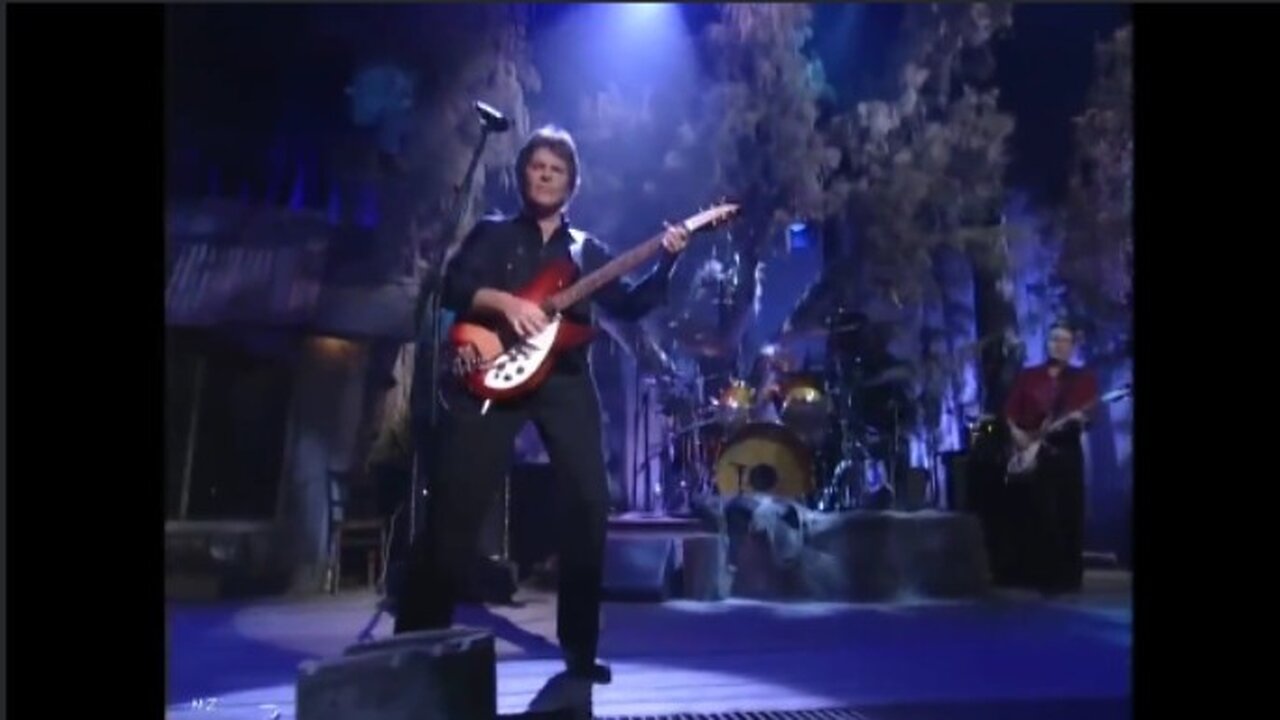
John Fogerty of (CCR) with "I PUT A SPELL ON YOU" - 1997 - Originally released in 1968.
John Fogerty of Creedence Clearwater Revival (CCR) with his still inimitable voice after all these years, with an all time favourite of theirs, "I put a spell on you".
Lyrics for this song:
I put a spell on you, because you're mine
You better stop the thing that you're doin'
I said, "Watch out, I ain't lyin'", yeah
I ain't gonna take none of your, foolin' around
I ain't gonna take none of your, puttin' me down
I put a spell on you because you're mine, all right
I put a spell on you, because you're mine
You better stop, the thing that you're doin'
I said, "Watch out, I ain't lyin'", yeah
I ain't gonna take none of your, foolin' around
I ain't gonna take none of your, puttin' me down
I put a spell on you because you're mine
Creedence Clearwater Revival, commonly abbreviated as CCR or simply Creedence, was an American rock band formed in El Cerrito, California. The band consisted of lead vocalist, lead guitarist, and primary songwriter John Fogerty, his brother, rhythm guitarist Tom Fogerty, bassist Stu Cook, and drummer Doug Clifford. These members had played together since 1959, first as the Blue Velvets and later as the Golliwogs, before settling on Creedence Clearwater Revival in 1967. The band's most prolific and successful period between 1969 and 1971 produced fourteen consecutive Top 10 singles (many of which were double A-sides) and five consecutive Top 10 albums in the United States – two of which, Green River (1969) and Cosmo's Factory (1970), reached number one. The band performed at the 1969 Woodstock festival in Upstate New York, and was the first major act signed to appear there.
CCR disbanded acrimoniously in late 1972 after four years of chart-topping success. Tom Fogerty left the previous year, and John was at odds with the remaining members over matters of business and artistic control, all of which resulted in lawsuits among the former bandmates. Fogerty's disagreements with Fantasy Records owner Saul Zaentz led to more court cases and John Fogerty refused to perform with the two other surviving members at Creedence's 1993 induction into the Rock and Roll Hall of Fame (Tom died in 1990). Though the band has never publicly reunited, John Fogerty continues to perform CCR songs as part of his solo act, while Cook and Clifford performed as Creedence Clearwater Revisited from 1995 to 2020.
CCR's music remains popular and is a staple of U.S. classic rock radio airplay; 45 million CCR records have been sold in the U.S. alone. The compilation album Chronicle: The 20 Greatest Hits, originally released in 1976, is still on the Billboard 200 album chart and reached the 600-week mark in August 2022. It has been certified Diamond by the Recording Industry Association of America (RIAA) for at least 12 million copies sold in the U.S.
History
Early career: The Blue Velvets (1959–1964)
John Fogerty, Doug Clifford, and Stu Cook met at Portola Junior High School in El Cerrito, California. Calling themselves the Blue Velvets, the trio played instrumentals and "jukebox standards", and backed John's older brother Tom at recordings and performances before he joined the band. The band had also released three singles, the second of which was picked up by Casey Kasem, who worked at KEWB, Oakland. In 1964 they signed with Fantasy Records, an independent jazz label in San Francisco. The band was attracted to the label after hearing a recording by Vince Guaraldi called "Cast Your Fate to the Wind" which the label had released to national success.
Vision and the Golliwogs (1964–1967)
For the band's first release, Fantasy co-owner Max Weiss renamed the group The Golliwogs (after the children's literary character Golliwog). Prior to the Golliwog name, Weiss had renamed them Vision. Bandmembers' roles changed during this period: Cook switched from piano to bass guitar and Tom Fogerty from lead vocals to rhythm guitar; John became the band's lead vocalist and primary songwriter. In Tom's words: "I could sing, but John had a sound!"
In 1966, John Fogerty and Doug Clifford were drafted into the U.S. armed forces; Fogerty joined the U.S. Army Reserve while Clifford joined the U.S. Coast Guard Reserve. Speaking of his experience in the US Army Fogerty has said: "I would become delirious and go into a trance. And I started narrating this story to myself, which was the song 'Porterville'." John Fogerty eventually took control of the group by singing lead vocals and blossoming into a multi-instrumentalist who played keyboards, harmonica, and saxophone in addition to lead guitar. By 1967, he was producing the group's recordings.
Name change to Creedence Clearwater Revival (1968–1969)
In 1967, Saul Zaentz bought Fantasy Records and offered the band a chance to record an album. Having hated the name "The Golliwogs" from day one, the band decided on their own name, Creedence Clearwater Revival (CCR), which they took in January 1968. According to interviews with the band members 20 years later, the name's elements came from three sources: Tom Fogerty's friend Credence Newball, whose name they changed to form the word Creedence (as in creed); a television commercial for Olympia Brewing Company ("clear water"); and the four members' renewed commitment to their band. Rejected contenders for the band's name included "Muddy Rabbit", "Gossamer Wump", and "Creedence Nuball and the Ruby"; however, the last was the starting point from which the band derived their final name. Cook described the name as "weirder than Buffalo Springfield or Jefferson Airplane". In early 1968, the band began appearing regularly at local San Francisco area clubs and venues including Deno and Carlo's, the Avalon Ballroom, and the Fillmore West. Later that year, the band began touring nationally across the US and made their first appearances in New York City at the Fillmore East.
By 1968, AM radio programmers around the U.S. took note when CCR's cover of the 1956 rockabilly song[13] "Susie Q" received substantial airplay in the San Francisco Bay Area and on Chicago's WLS-AM. It was the band's second single, its first to reach the Top 40 (No. 11), and its only Top 40 hit not written by John Fogerty. Two other singles were released from their May 1968 debut self titled album: a cover of Screamin' Jay Hawkins's "I Put a Spell on You" (No. 58) and "Porterville" (released on the Scorpio label with writing credited to "T. Spicebush Swallowtail"), written during Fogerty's time in the Army Reserve.
Peak success: 1969–1970
CCR in concert in Inglewood, California, December 1969
After their breakthrough, CCR began touring and started work on their second album, Bayou Country (released January 1969), at RCA Studios in Los Angeles. A No. 7 platinum hit, the record was their first in a string of hit albums and singles that continued uninterrupted for two years. The single "Proud Mary", backed with "Born on the Bayou", reached No. 2 on the national Billboard chart. The former would eventually become the group's most-covered song, with some 100 versions by other artists to date, including the No. 4 1971 hit by Ike & Tina Turner, two years to the week after the original peaked. John cites this song as being the result of high spirits on gaining his discharge from the Army Reserve. The album also featured a cover of the rock & roll classic "Good Golly, Miss Molly" and the band's nine-minute live-show closer, "Keep On Chooglin'".
Months later, during April 1969, "Bad Moon Rising" backed with "Lodi", was released and peaked at No. 2 in the US. In the United Kingdom, "Bad Moon Rising" spent three weeks at number one on the UK Singles Chart during September and October 1969, becoming the band's only number one single in the UK. The band's third album, Green River, followed in August 1969, was their first album to top the Billboard 200, and went gold along with the single "Green River", which again reached No. 2 on the Billboard charts. The B-side of "Green River", "Commotion", peaked at No. 30 and the band's emphasis on covers of their old favorites continued with "Night Time Is the Right Time". CCR continued to tour constantly with performances in July 1969 at the Atlanta Pop Festival and in August 1969 at the Woodstock Festival. Their set was not included in the Woodstock film or soundtrack because John felt the band's performance was subpar. Four tracks from the event (out of a total of eleven) were eventually included in the 1994 commemorative box set Woodstock: Three Days of Peace and Music. Cook, however, held an opposing view, saying, "The performances are classic CCR and I'm still amazed by the number of people who don't even know we were one of the headliners at Woodstock '69." John later complained the act that preceded them, the Grateful Dead, had put the audience to sleep; as John scanned the audience he saw a "Dante scene, just bodies from hell, all intertwined and asleep, covered with mud".
Creedence Clearwater Revival ... were progressive and anachronistic at the same time. An unapologetic throwback to the golden era of rock and roll, they broke ranks with their peers on the progressive, psychedelic San Francisco scene. Their approach was basic and uncompromising, holding true to the band members' working-class origins. The term "roots rock" had not yet been invented when Creedence came along, but in essence, they defined it, drawing inspiration from the likes of Little Richard, Hank Williams, Elvis Presley, Chuck Berry, and the artisans of soul at Motown and Stax. In so doing, Creedence Clearwater Revival became the standard bearers and foremost celebrants of homegrown American music.
— Rock and Roll Hall of Fame[3]
After Woodstock, CCR were busy honing material for a fourth album, Willy and the Poor Boys, their second top 3 LP, released in November 1969. "Down on the Corner" and "Fortunate Son", both of which they performed on The Ed Sullivan Show on November 16, 1969, climbed to No. 3 and No. 14, respectively, by year's end. The album was CCR in standard mode, featuring Fogerty originals and two reworked Lead Belly covers, "Cotton Fields" and "Midnight Special". The year 1969 had been a remarkable chart year for the band: three Top Ten albums, four hit singles (three charting at No. 2 and one at No. 3) with three additional charting B-sides.
CCR released another double A-side hit, "Travelin' Band"/"Who'll Stop the Rain", in January 1970. The speedy "Travelin' Band", with a strong Little Richard sound, however, bore enough similarities to "Good Golly, Miss Molly" to warrant a lawsuit by the song's publisher; it was eventually settled out of court. The song ultimately topped out at No. 2. The band also recorded its January 31, 1970, live performance at the Oakland Coliseum Arena, which would later be marketed as a live album and television special. In February, CCR were featured on the cover of Rolling Stone, although only John was interviewed in the accompanying article.
In April 1970, CCR were set to begin their first European tour. To support the upcoming live dates, John wrote "Up Around the Bend" and "Run Through the Jungle"; the single reached No. 4 that spring. The band returned to Wally Heider Studios in San Francisco in June to record Cosmo's Factory. The album contained the earlier Top 10 hits "Travelin' Band" and "Up Around the Bend" plus popular album tracks such as the opener "Ramble Tamble".
Cosmo's Factory was released in July 1970, and it was number one in the US for nine weeks. It was released along with the band's fifth and final No. 2 national hit, "Lookin' Out My Back Door"/"Long as I Can See the Light". Although they topped some international charts and local radio countdowns, CCR have the distinction of having had five No. 2 singles without ever having had a No. 1 on the Hot 100, the most of any group. Their five No. 2 singles were exceeded only by Madonna (six), Taylor Swift (seven), and Drake (nine), and tied with Elvis Presley and the Carpenters. Conversely, on station WLS-AM the band had three No. 1's, four No. 3's, and two No. 4's, but no No. 2 singles, with "Down on the Corner" the only top ten CCR single registering the same peak position (No. 3) on the Hot 100 and on WLS.
Other cuts on the Cosmo's Factory album included an 11-minute jam of Marvin Gaye’s 1968 cover of "I Heard It Through the Grapevine" (a minor hit when an edited version was released as a single in 1976), and a nearly note-for-note homage to Roy Orbison's "Ooby Dooby". The album was their biggest seller, going to No. 1 on the Billboard 200 album charts and No. 11 on Billboard's Soul Albums chart.
Pendulum, released in December 1970, was another top seller, spawning a Top 10 hit with "Have You Ever Seen The Rain?" John played the Hammond B3 organ on many of the Pendulum tracks, notably in "Have You Ever Seen The Rain?", in recognition of the deep respect and influence of Booker T. & the M.G.'s, with whom the members of the band had jammed. The single's flip side, "Hey Tonight", was also a hit.
For more information on Creedence Clearwater Revival, please go to: https://en.wikipedia.org/wiki/Creedence_Clearwater_Revival
-
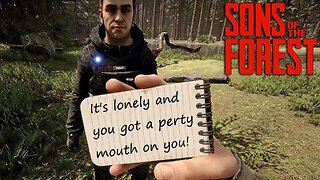 7:50:03
7:50:03
Scottish Viking Gaming
9 hours ago💚Rumble :|: SUNDAY FUNDAY :|: Virginia has two Verginers, Change my Mind!
83.1K14 -
 1:49:50
1:49:50
Winston Marshall
2 days agoThe DARK Reality of Socialism - Historian Giles Udy
67.9K75 -
 1:09:28
1:09:28
Sports Wars
7 hours agoBengals STAY ALIVE In OT Thriller, ESPN's Ryan Clark SLAMMED, NFL DESTROYS NBA On Christmas
56.3K6 -
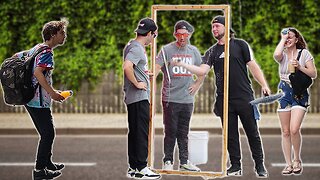 9:37
9:37
EvenOut
1 day ago $4.47 earnedThe Non-Reflecting Mirror Scare Twin Prank!
49.1K4 -
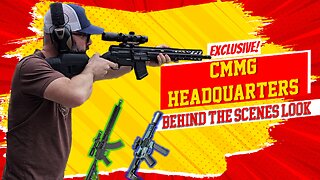 11:19
11:19
Tundra Tactical
1 day ago $6.21 earnedI Saw How CMMG Makes Guns.
60.7K7 -
 15:34
15:34
Misha Petrov
20 hours agoReacting To TikTok’s Most DELUSIONAL Takes!
76.1K58 -
 1:52:24
1:52:24
Squaring The Circle, A Randall Carlson Podcast
1 day ago#032 Flournoy Holmes' Artwork Helped Define The Southern Rock Phenomenon of The Early 1970's
53.6K6 -
 19:56
19:56
inspirePlay
1 day ago $1.00 earnedWalking with Lions & Facing Africa’s Wild Side | Safari Adventure with the Grid Championship Crew!
35.9K1 -
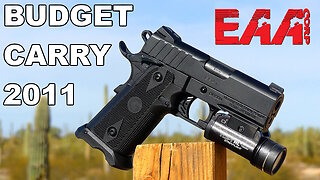 10:50
10:50
RTT: Guns & Gear
2 days ago $1.92 earnedBudget Friendly Carry 2011: EAA Girsan Brat 2311
32.2K6 -
 3:49:06
3:49:06
Alex Zedra
21 hours agoLIVE! New Game | Nuclear Nightmare
119K16